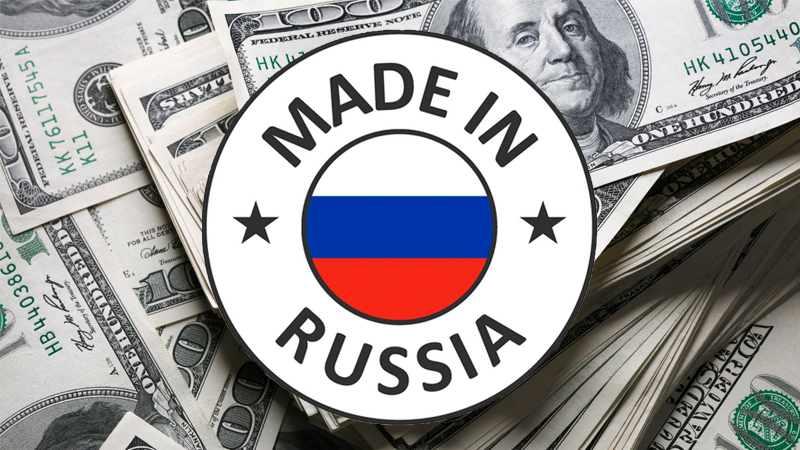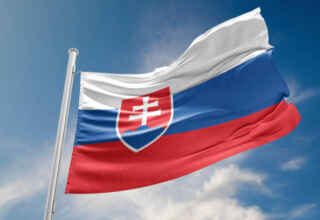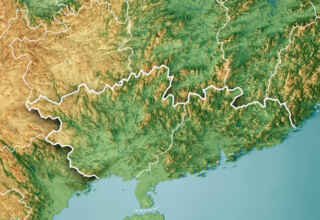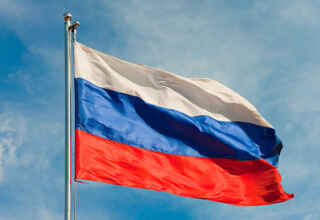
The Russian Federation imported US$231.6 billion worth of goods from around the globe in 2020, up by 27% since 2016 but down by -5% from 2019 to 2020.
Based on the average exchange rate for 2020, the Russian ruble has depreciated by -7.5% against the US dollar since 2016 and declined by -11.4% from 2019 to 2020, therefore, the Russian Federation’s weaker local currency makes its imports paid for in stronger US dollars relatively more expensive when converted starting from Russian rubles.
From a continental perspective, 44.8% of Russia’s total imports by value in 2020 were purchased from fellow European countries, Asian trade partners generated 44.3% of import sales to Russia while 6.5% worth originated from North America.
Smaller percentages came from Latin America (2.7%) excluding Mexico but including the Caribbean, Africa (1.1%) and Oceania (0.4%) led by Australia.
Given Russia ‘s population of 146.8 million people, its total $231.6 billion in 2020 imports translates to roughly $1,600 in yearly product demand from every person in the vast Eurasian country.
Furthermore, Russia’s top 10 imports accounted for roughly three-fifths (60.1%) of the overall value of its product purchases from other countries; optical, technical, and medical apparatus represents the fastest-growing Russian import category, up 11.2% from 2019 to 2020.
When it comes to the European Union, Russia is its main trade partner, since 1997, the EU’s political and economic relations with Russia have been based on a bilateral Partnership and Cooperation Agreement known as the PCA, the trade-relevant sections of the PCA aim to promote trade and investment, and to develop mutually beneficial economic relations.
Since Russia joined the WTO in 2012, EU-Russia trade relations have also been framed by multilateral WTO rules.
Since 2014, the illegal annexation of Crimea and the conflict in Eastern Ukraine have seriously affected EU-Russia relations and as a result, some of the policy dialogues and mechanisms of cooperation, including in the area of trade, have been suspended.
Russia is the EU’s fifth-largest trade partner, representing 4.8% of the EU’s total trade in goods with the world in 2020, the country, is the origin of 26% of the EU’s oil imports and 40% of the EU’s gas imports and so energy price volatility directly affects the volume of bilateral trade.
Negotiations for a new EU-Russia agreement started in 2008 but were put on hold in 2010 owing to a lack of progress in the Trade and Investment Chapter, later in March 2014, the European Council suspended the negotiations due to the crisis in Ukraine.
Russia’s accession to the WTO in 2012 raised expectations that trade with Russia would benefit from sustained liberalisation, instead, Russia has progressively put in place numerous measures favouring domestic products and services over foreign ones, and incentivising localisation of production in Russia by foreign companies.
This import substitution policyhas been continually expanded, as a result, many EU exporters are either pushed out of the market or obliged to relocate production to Russia.
Related measures often contravene WTO rules and cause many trade irritants and some of these have reached WTO dispute settlement
The EU has filed four disputes against Russia at the WTO, in 2014 on Russia’s excessive import duties and on Russia’s anti-dumping duties on light commercial vehicles, in both cases, the WTO ruling favourable to the EU was implemented by Russia; in 2014 on Russia’s embargo on EU pig meat on the basis of sanitary and phytosanitary (SPS) requirements, the authority of the compliance panel lapsed in January 2021, and; in 2013 on Russia’s recycling fee on imported motor vehicles – the case is currently on hold.
Russia has also filed four disputes at the WTO against the EU: in 2014 on the EU’s third energy package, in 2013 and 2015 on gas cost-adjustment in EU anti-dumping investigations, and in 2017 on EU anti-dumping measures on imports of certain cold-rolled flat steel products from Russia. All four disputes are ongoing.
Moreover, Europe is highly dependent on Russian natural gas and oil, overall Russia represents around a third of all energy imports.
While some countries are more dependent on others, sanctions that impact the energy sector could have catastrophic consequences for Europe and the rest of the world.
Until now, the West has tried to avoid attacking companies and banks involved in the sector, but this gives Russia advantages as it is a main income source for the country.
While no sanctions or embargoes have been announced by European countries on the oil and gas sector, Germany has announced that they will postpone the construction of the Nord Stream 2 pipeline.
One of the companies involved in the construction of the pipeline has announced that they are filing for bankruptcy after being hit hard by sanctions, this pipeline was planned to increase the quantity of natural gas able to be sent to Germany and other European countries.
On the other hand, the trade relationship between the Russian Federation and the United States, while larger than any point in history, is still considerably lower than each country’s major trade partner.
The sanctions imposed by the United States are already having an impact on the Russian economy. The price of the Russian ruble has dropped significantly since more severe sanctions were announced this week. This round included sanctions to the Central Bank of Russia which will limit the country’s ability to manage its currency reserves, which are held by central banks all over the world.
Russia is the fortieth largest export market for the US, and the twentieth-largest important market relied on for imports, but even though the US imports Russian oil, it is not highly dependent on the country for its supplies.
Russia’s invasion of Ukraine has triggered severe economic sanctions and condemnation from the United States and its allies.
Oil prices have surged due to concerns about disruptions to global supply, eight per cent of which comes from Russian exports, leading traders to seek out alternative sources in an already tight market.
The spiralling prices are a particular concern for the US, the world’s biggest oil consumer, where inflation is already running at a four-decade high.
While the sanctions against Russia have not specifically targeted its energy supply, the measures do cover banks and financial institutions, which indirectly hampers the country’s ability to export oil and other fuels.
Rising prices have already dealt a blow to US President Joe Biden’s approval ratings, which are in the doldrums after sinking to a record low of 33 percent in January. Further increases in inflation would further weaken the president’s standing ahead of crucial mid-term elections in November.
Pankratz said rising inflation could result in “enormous” political consequences.
While there is no near-term, silver-bullet policy to blunt the impact of geopolitical disruptions of the market, pursuing policies that allow domestic production to return to pre-pandemic levels will help to provide market stability and insulate not only the U.S. but the world from major disruptions. Policymakers can also provide relief from policies that increase the cost of producing refined products and policies that make it uneconomic to transport crude oil and petroleum products domestically.
References:
Oil and petroleum Imports rom Russia Explained, available at:
https://www.afpm.org/newsroom/blog/oil-and-petroleum-imports-russia-explained
Russia, available at:
https://ec.europa.eu/trade/policy/countries-and-regions/countries/russia/
How much oil does the US get from Russia, available at:
https://www.aljazeera.com/news/2022/3/3/how-much-oil-does-the-us-import-from-russia
https://www.worldstopexports.com/russias-top-10-imports/
What does the US import and export from Russia, available at:
https://en.as.com/en/2022/03/02/latest_news/1646243224_018183.html
By The European Institute for International Law and International Relations.












